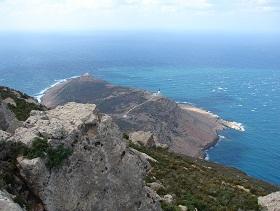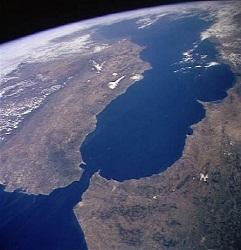River subbasins more depleted than
official figures show
09 April 2024
Published online 23 August 2010

Human activities, climate change and the invasion of alien species are threatening the rich marine life of the Mediterranean Sea more so than any other sea or ocean, according to a new study published in the Public Library of Science (PLOS).
The decade-long Census of Marine Life study, conducted by 360 researchers from 80 countries, is the largest global study of marine life ever undertaken. The researchers organized into 13 committees studying the world's oceans and seas and the final results will be announced in London this October.
Habitat loss and degradation, compounded by overfishing, pollution, climate change, eutrophication, and invasion by alien species, pose the biggest threats to life in the Mediterranean.
Human activity in and around the sea threatens marine life in the Mediterranean more than any other of the oceans and seas surveyed. The land encompassing the Mediterranean has been inhabited by humans for thousands of years. More than 200 million tourists flock to its sunny beaches each year, increasing population density in the coastal areas.
Many factories and industrial plants on the banks of the the nearly enclosed sea dispose of their waste directly into its waters, causing destruction of many fragile coral habitats. Overfishing of certain species, such as the critically endangered bluefin tuna, further damages the ecosystem.

NASA
The Mediterranean Sea is one of the most robust aquatic zones in the world. Over 600 alien species have found their way to the sea, composing up to 4% of sea life. Half of these species arrived from the Red Sea through the Suez Canal, attracted by the warming waters of the Mediterranean, while more than 22% travelled in the ballasts of ships from as far off as the United States.
"We knew there were invasive species. In 2008 we accidently caught a bluespotted cornetfish (Fistularia commersonii) near Algiers. This fish normally lives in the Red Sea," said Azeddine Bennoui, a researcher from the Algerian National Center for Research and Development of Fishing and Aquaculture. However, he was surprised at the large numbers found in the survey. "This is a scary number. We do not know what effect it will have, but I'm sure it will change aquatic life in the region."
The American comb jelly (Mnemiopsis leidyi) is the most invasive of the newcomers. It has spread across all of the Mediterranean after hitching rides in the ballasts of large oil tankers. It is infamous for damaging fisheries and ecosystems.
Other species, such as the pacific oyster (Crassostrea gigas), were introduced into aquacultures for their commercial value. However, they slipped into the sea unintentionally.
The team found the Mediterranean Sea's rich marine biodiversity to be the most susceptible to rising temperatures being caused by climate change.
The study documented 17,000 different species of fauna and flora living in the Mediterranean Sea to a depth of over 4,000 metres. An estimated 75% of deep-water species in the sea remain unknown, and some may go extinct before they can be identified owing to the threats to biodiversity, warned the study's authors.
Samir Gimes, a researcher at Algiers University, Algeria, stressed that it is important to determine how to preserve this special biodiversity, or at least decrease the threats it faces. "We cannot adopt one or two solutions, we need a hybrid approach. This includes regulating fishing, setting up natural protectorates, and controlling economic activities along the coastlines.
"But this must be done with respect to the social and cultural diversity that distinguishes each of the different regions of the Mediterranean."
doi:10.1038/nmiddleeast.2010.190
Stay connected: